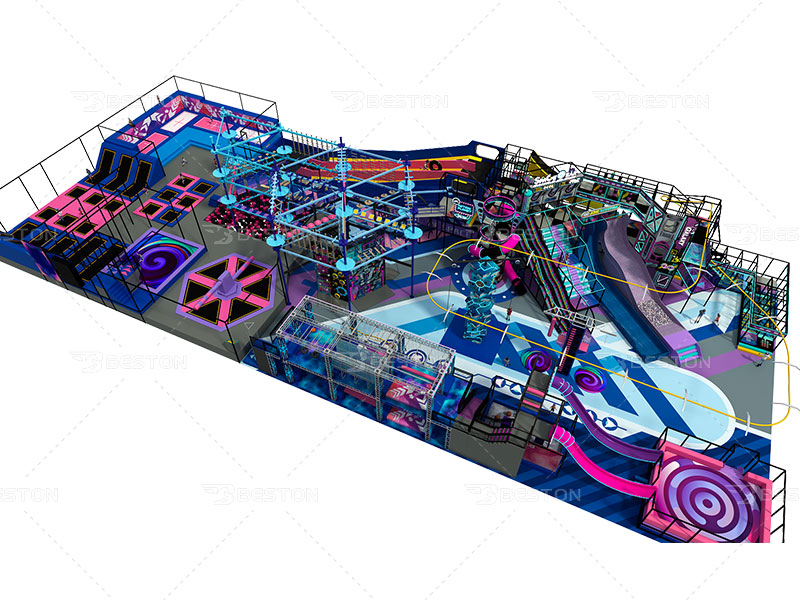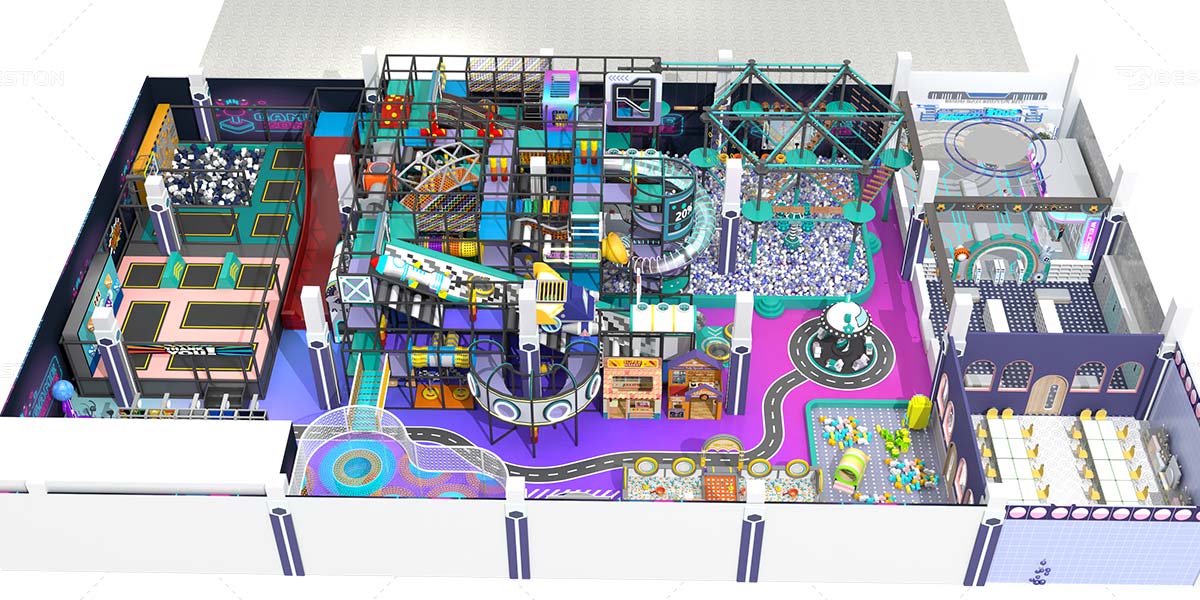How to make commercial indoor playground plan
Designing a commercial indoor playground requires careful planning to create a safe, engaging, and profitable space. Here is a comprehensive guide on how to make a commercial indoor playground plan:

1. Define Your Target Audience:
- Identify the age groups you want to cater to.
- Consider the interests and preferences of your target audience.
- Design different zones for various age groups to ensure age-appropriate activities.
2. Research Regulations and Standards:
- Familiarize yourself with safety regulations and industry standards for indoor playgrounds.
- Ensure compliance with local building codes and safety guidelines.
- Consult with a professional or relevant authorities to ensure your design meets all requirements.
3. Space Analysis:
- Assess the available space for your commercial indoor playground equipment.
- Consider the layout, ceiling height, and any architectural constraints.
- Plan for both play areas and necessary amenities like restrooms, party rooms, and a reception area.
4. Themed Concept and Design:
- Choose a theme that aligns with your target audience and business goals.
- Design an engaging layout with a cohesive theme, incorporating vibrant colors and stimulating elements.
- Consider interactive elements, murals, and 3D decorations to enhance the overall ambiance.
5. Play Equipment Selection:
- Choose a variety of play equipment that caters to different interests and abilities.
- Ensure the equipment meets safety standards and durability requirements.
- Balance active play structures with quieter areas for creative and imaginative play.

commercial indoor playground for sale
6. Safety Measures:
- Implement safety features such as soft flooring, padding on equipment, and safety netting.
- Ensure clear sightlines for supervisors to monitor children.
- Consider security measures like controlled access points and surveillance cameras.
7. Traffic Flow and Accessibility:
- Plan the layout to facilitate smooth traffic flow within the indoor playground equipment cost.
- Ensure accessibility for individuals with disabilities.
- Place seating strategically for parents and caregivers to observe their children.
8. Cafeteria/Refreshment Area:
- Allocate space for a cafeteria or refreshment area.
- Consider offering healthy snacks and drinks.
- Design a seating area where parents can relax while keeping an eye on their children.
9. Party Rooms and Event Spaces:
- Plan dedicated party rooms for birthday celebrations or special events.
- Consider flexible spaces that can be adapted for various activities.
- Provide packages that include party planning services.
10. Aesthetics and Branding:
- Incorporate your brand colors, logo, and signage into the design.
- Create a visually appealing environment that enhances your brand identity.
- Consider the overall aesthetics to create a memorable experience for visitors.
11. Maintenance and Durability:
- Choose materials and equipment that are easy to clean and maintain.
- Consider the durability of surfaces and equipment to withstand high usage.
- Implement a regular maintenance schedule to address wear and tear.
12. Cost Estimation and Budgeting:
- Develop a detailed budget, including construction, equipment, permits, and operational costs.
- Obtain quotes from suppliers and contractors to ensure accurate cost estimation.
- Plan for contingencies and unforeseen expenses.
13. Marketing and Promotion:
- Integrate marketing elements into the design, such as visible logos and promotional spaces.
- Plan for promotional events and collaborations to attract visitors.
- Consider incorporating a social media-friendly design to encourage user-generated content.
14. Consult Professionals:
- Work with experienced architects, designers, and safety consultants.
- Seek input from professionals in the indoor playground industry to enhance your design.
- Collaborate with contractors who have experience in building commercial indoor playground fairground ride manufacturers.
15. Test and Iterate:
- Before the final implementation, create a small-scale prototype or test area to gather feedback.
- Iterate the design based on user experiences and suggestions.
- Consider a phased approach for implementation to address any unforeseen issues.
By carefully considering these factors and engaging with professionals in the industry, you can create a commercial indoor playground plan that not only meets safety and regulatory standards but also provides an exciting and memorable experience for your target audience. Click here buy amusement rides.
